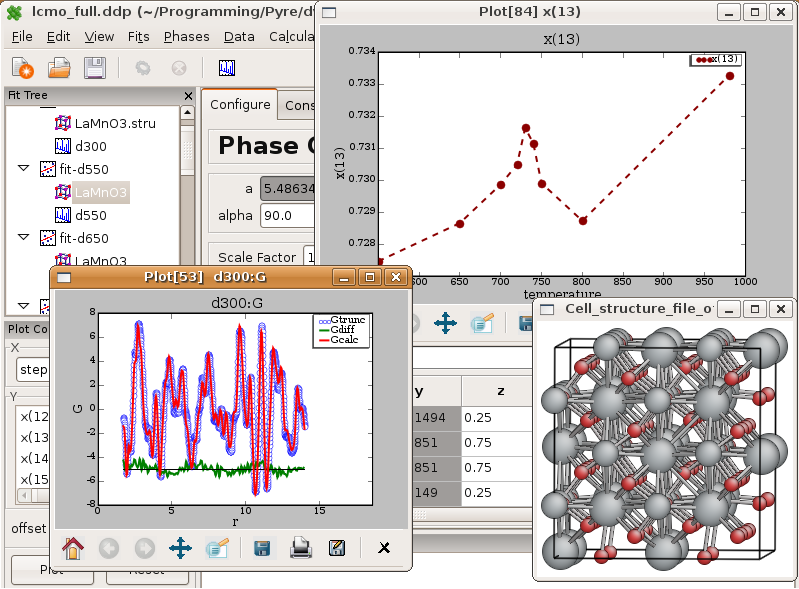Enabling new science in nanoscale structure characterization of complex materials¶
C. L. Farrow, P. Juhás, J. W. Liu, D. Bryndin, E. S. Božin, J. Bloch, and S. J. L. Billinge (Michigan State University)
To understand and control the properties of materials it is necessary to have a detailed knowledge of their atomic structure. Increasingly, we are interested in exploiting materials with complex structures on the nanoscale, which presents special experimental challenges as crystallography, the standard approach to structure determination, loses its power on these length-scales. Alternative methods sensitive to nanoscale order are under development. The diffraction sub-group of the DANSE project recently released a new software tool that will have a large impact in nanostructure characterization using x-ray and neutron diffraction.

Screen-shot of PDFgui during a refinement of multiple data-sets¶
The diffraction data are Fourier transformed to obtain the atomic pair distribution function (PDF) and analyzed by quantitatively fitting nanostructure models to the data. PDFgui allows rapid setup of individual and multiple refinements. This program will be implemented at the POWGEN3 and NOMAD diffractometers at SNS with macros to allow real-time parametric refinements similar to those shown, allowing researchers to make scientific discoveries during data collection, at the beam-time, and not a-posteriori after the beamtime is over. PDFgui has numerous extensions that are described in more detail in [1]. The beta version of PDFgui is now in public release, available for Windows, Linux and Mac OSX platforms, and in the first month has been downloaded 220 times. More information can be found at https://www.diffpy.org.